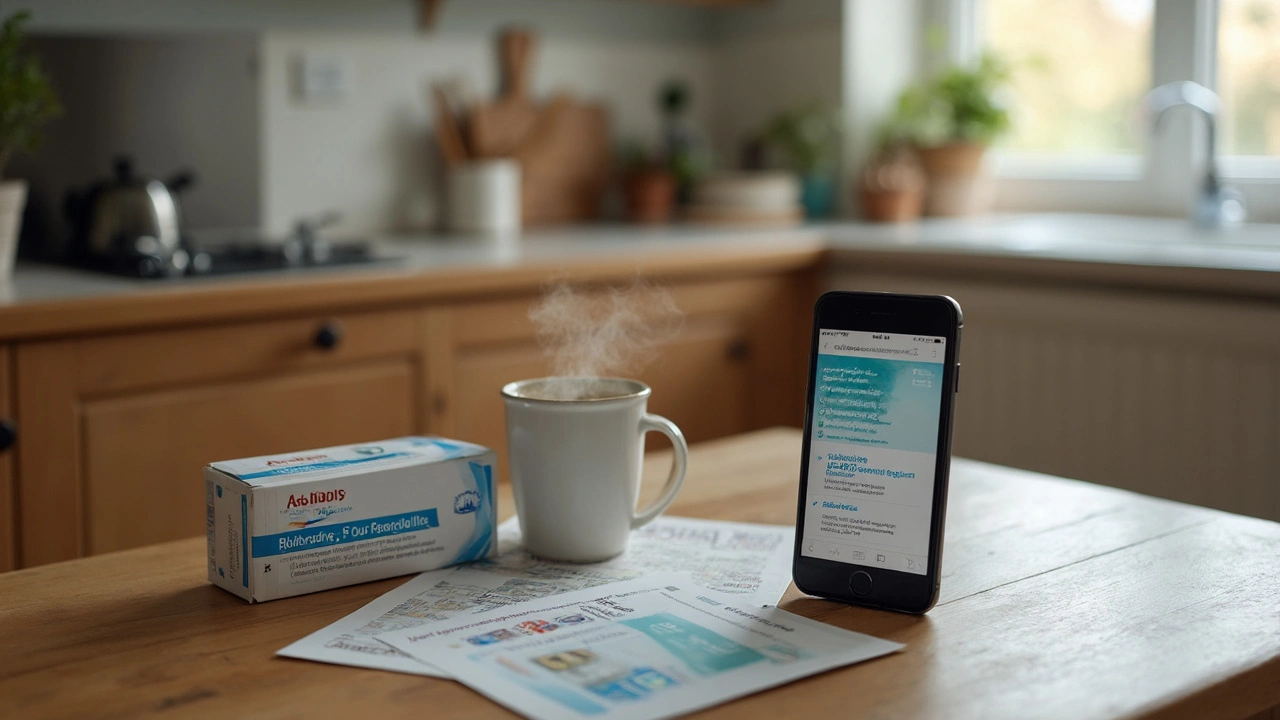How Warming-Up Can Outperform Quick-Relief Inhalers for EIB
If you hate relying on your rescue inhaler every time you go for a run, you're not alone. Exercise-induced bronchospasm (EIB) sneaks up on plenty of active people. But here's the wild part: smart, structured warm-ups might reduce or even prevent attacks for some people, skipping the albuterol altogether. This isn't just gym folklore – multiple studies point to real benefits. When you engage in a gradual warm-up, preferably with brief bursts of higher intensity (what exercise geeks call "interval warm-ups"), your airways do something cool called "refractory response." In plain terms, if you trigger a small, controlled airway spasm, the body learns to chill out and not overreact the next time you push harder. One typical approach: Start with 5 minutes at very easy effort, then 5 minutes at moderate pace, and finally do 2-3 short (30 seconds) sprints sprinkled with recovery walks. Finish with 5 more minutes of easy movement before the main event. The secret is: don’t start cold. No hero sprints straight off the couch.
Some folks get as much as a 40% drop in airway reactivity with this protocol – that's no joke when you want to actually enjoy sport instead of gasping on the sidelines. Still, not all bodies play by the same rules. Age, general asthma severity, air temperature, and humidity all factor in. One study out of Sydney had footballers in 10-degree-Celsius weather show less benefit than those training indoors, so layering up or using a heat-exchanger mask is smart in winter. In hot, dry Melbourne summers, hydration becomes crucial; dry air will irritate your lungs, so keep water handy. For heavy pollen days, warming up indoors might be the better call. It’s about knowing your body and adapting.
Consistency is where most people slip. Do this routine every training session, not just race days. When you skip it, you’ll notice—the chest tightness, cough, wheeze all make an unwelcome comeback. There’s also a less obvious win: injury prevention. A solid warm-up preps muscles, reduces stiffness, and gets your head in the game. So think of your pre-workout as not just asthma protection but performance insurance, too.
Leukotriene Receptor Antagonists: Quietly Powerful Daily Meds
Let’s talk about albuterol alternatives. Most people know the blue puffer (Ventolin), but the world of asthma meds stretches way beyond it. Enter leukotriene receptor antagonists (LTRAs), which you know as montelukast (Singulair) or zafirlukast (Accolate). These meds don’t get as much attention, but for regular exercisers with EIB, they can be a game-changer. LTRAs block substances called leukotrienes that constrict airway muscles and cause swelling. Taking a tablet daily creates a "base layer" of airway protection, reducing the likelihood and severity of EIB – without the jitters or rapid heart rate that can come when you overuse your inhaler before every run.
The science is strong: At least ten randomized controlled trials since 2016 showed LTRAs cut EIB symptoms by 50-70% for most patients, compared to 20-30% with just pre-exercise inhaler use. They're safe for adults and kids, and you don't build up a tolerance the way you might with a rescue inhaler. They're not a cure-all, though – certain bodies, especially those with allergic triggers, benefit more than others. It’s also worth noting that LTRAs aren’t instant – you need to take them days to weeks in advance to feel the difference. Don’t try them for the first time before a big half-marathon. And yes, there’s a tiny risk of rare neuropsychiatric side effects, so any mood, sleep, or behavior changes should get flagged with your doctor immediately.
For anyone sick of carrying a puffer everywhere, or if you find you’re needing your inhaler more than twice a week, chat to your GP or asthma nurse about trying LTRAs. More info on these and other alternative to albuterol inhaler can help widen your toolkit. It’s all about picking what slots into your lifestyle—and budget. LTRAs aren’t super pricey, but they’re prescription-only in Australia. If you travel, double-check your meds are approved in your destination country.

Caffeine: The Surprising Bronchodilator in Your Mug
Who knew your morning coffee could do more than just wake you up? Caffeine is chemically similar to theophylline, a longtime asthma drug. There’s good news for people who like their coffee strong or sip a can of cola before a workout: caffeine can open your airways a little, and it’s been shown to reduce EIB for a couple of hours. But how much do you need, and does it really work?
Let’s get precise: You’ll want around 3-6 mg of caffeine per kilogram of body weight, about 200-400 mg for most adults. That’s roughly one large barista coffee, one energy drink, or two cups of home brew. Spread it over an hour pre-exercise for best effect. There’s solid evidence (meta-analyses from 2023 confirm this) that this much caffeine can boost lung function and ease mild EIB. But don’t get carried away—more isn’t better. Higher doses can make you jittery, raise your heart rate, and trash your sleep if you train at night.
Here’s a quick table comparing caffeine sources and their potential impact on EIB:
| Source | Approx. Caffeine Content (mg) | Typical Dose for EIB effects |
|---|---|---|
| Espresso (double shot) | 150 | 1-2 shots |
| Brewed coffee (250ml) | 100 | 2-3 cups |
| Energy drink (250ml) | 80 | 2-4 cans |
| Black tea (250ml) | 60 | 3-6 cups |
Here's the catch: caffeine isn’t for everyone. If you’ve got a sensitive stomach or shaky hands after a cup, go slow. It can also interact with certain asthma meds, especially theophylline, so double-check with a pharmacist. Don’t expect caffeine to fully substitute for your other meds if your EIB is moderate or severe – think of it as a backup or mild booster. For occasional runners or cyclists looking for a little extra edge, it can work wonders, and it’s a totally accessible option without a script.
Real Life: Mixing and Matching Your EIB Prevention Plan
The tricky part about exercise-induced bronchospasm is that the right approach isn’t one-size-fits-all. Success happens when you build your prevention playbook by layering tactics that fit your unique physiology and routine. Let’s walk through a day-in-the-life scenario of someone juggling all three options: Anna, a 27-year-old AFL rec player in Melbourne's outer west. She starts her afternoon game days by taking her daily LTRA tablet with lunch, keeps her caffeine intake to one coffee about 45 minutes before warm-up, and commits to a ten-minute dynamic warm-up before drills. This combo lets her leave the puffer in the change room unless pollen or smoke really spike—and her coach reports she’s sitting out much less than last year.
If you’re considering the same, start with the warm-up protocol first. You lose nothing by making a habit of slow build-ups and sprints. If symptoms persist or interfere with performance, talk with your doctor about LTRAs or daily antihistamines. Caffeine is a neat add-on, especially for morning or midday training, but log how your body reacts over several sessions before staking your whole EIB plan on that extra flat white. And if you travel for sport, remember that environmental factors matter: humid coastal runs will make EIB easier to control, but high-altitude events (think Falls Creek or Thredbo) can trigger symptoms even in mild cases.
Asthma management in Australia is top-notch. Local pharmacists know their stuff, and the National Asthma Council has clear peak flow plans for anyone unsure when to dial back or ramp up meds. If you’re looking into an albuterol alternative, keeping track of your symptoms with a simple journal or fitness tracker can help spot patterns and fine-tune your plan. Don’t forget, other triggers (like spicy food, intense emotions, or cold air) also cause airway spasms, even if you’re not exercising. Tweaking the warm-up routine or caffeine timing can mitigate these alternative triggers too.
The science is clear: layering non-albuterol strategies isn’t just possible, it’s practical and can make sport accessible for more people. The gains aren’t just measured in time saved or games played, but in the comfort and confidence to leave the house knowing you won’t be short of breath by the second lap. It only takes a little planning—and maybe a double shot of coffee—to take control back from EIB, and get on with living well.



Deb Kovach
I've always found that warming up gradually before exercising really helps reduce the tightness in my chest. It's like telling your lungs, "Hey, we're about to get busy," which somehow makes all the difference! 😊 Another thing I've tried is leukotriene receptor antagonists as my doctor suggested, and honestly, they've been a game changer for me.
It’s interesting that caffeine might help too! I never would have guessed that a morning cup of coffee could play a role in easing asthma symptoms during workouts. Has anyone else here tried caffeine specifically for bronchospasm relief?
One thing I would add is to test any new strategy carefully and always have your usual inhaler nearby as a backup. Safety first, right? Thanks for sharing this comprehensive breakdown; it’s so helpful to have clear guidance on alternatives beyond just albuterol.